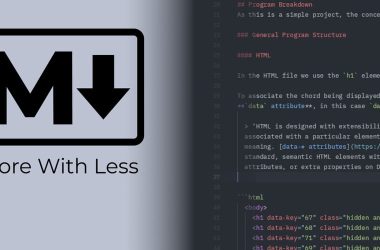MPLS Fundamentals: A Deep Dive
Introduction:
In the ever-evolving landscape of networking, where speed, efficiency, and reliability are paramount, Multiprotocol Label Switching (MPLS) stands out as a pivotal technology. It’s not just a routing protocol; it’s a traffic engineering mechanism that enhances packet forwarding across a network. MPLS aims to combine the best aspects of Layer 2 switching with Layer 3 routing, providing a powerful solution for service providers and large enterprises seeking to optimize network performance, implement VPNs, and support Quality of Service (QoS). Instead of relying on complex IP address lookups at each hop, MPLS uses short, fixed-length labels to expedite the forwarding process, drastically reducing latency and improving overall network efficiency. This article will delve into the fundamentals of MPLS, covering its prerequisites, advantages, disadvantages, key features, and practical examples.
Prerequisites for Understanding MPLS:
Before diving into the intricacies of MPLS, a solid understanding of the following networking concepts is crucial:
- IP Routing: A fundamental understanding of routing protocols like OSPF, IS-IS, or BGP is essential. MPLS leverages these protocols to establish the routing information base (RIB) which is later used to create the forwarding table.
- Layer 2 Switching: Familiarity with Ethernet frames, VLANs, and the basic principles of switching is required, as MPLS effectively utilizes Layer 2-like forwarding mechanisms.
- Forwarding Information Base (FIB): Knowledge of how routers use FIBs to determine the next hop for packets. MPLS essentially creates its own specialized FIB, the Label Forwarding Information Base (LFIB).
- Basic Networking Terminology: Familiarity with common networking terms such as routers, switches, packets, frames, headers, and payloads is expected.
How MPLS Works: The Core Concepts
MPLS operates on the principle of label switching. Instead of examining the IP header at each hop, routers forward packets based on labels. Here’s a breakdown of the core components:
- Label: A short, fixed-length identifier (typically 20 bits) that is prepended to the IP packet header. This label guides the packet through the MPLS network.
- Label Switched Path (LSP): The path that a packet takes through the MPLS network. An LSP is established based on the destination network and any configured traffic engineering policies.
- Label Switching Router (LSR): Routers that participate in the MPLS domain. They perform label operations such as push (add a label), swap (replace a label), and pop (remove a label).
- Ingress LSR (LER): The first LSR in the MPLS domain. It receives IP packets, assigns them a label based on their destination, and pushes the label onto the packet. Also called the provider edge (PE) router.
- Transit LSR: Routers within the MPLS domain that switch packets based solely on the label. They swap the incoming label with an outgoing label.
- Egress LSR (LER): The last LSR in the MPLS domain. It removes the label from the packet and forwards it to its destination based on the IP header. Also called the provider edge (PE) router.
- Label Distribution Protocol (LDP): A protocol used to distribute labels between LSRs. LDP advertises label mappings for specific IP prefixes. Another option is Resource Reservation Protocol-Traffic Engineering (RSVP-TE) for more sophisticated LSP setup.
The MPLS Forwarding Process:
- Ingress LER: The ingress LER receives a standard IP packet. It consults its FIB to determine the appropriate LSP for the packet’s destination. It then pushes the corresponding label onto the packet’s header.
- Transit LSRs: Each transit LSR receives the labeled packet. It looks up the incoming label in its LFIB, determines the outgoing label, and swaps the incoming label with the outgoing label. The packet is then forwarded to the next hop.
- Egress LER: The egress LER receives the labeled packet. It removes (pops) the label and forwards the original IP packet towards its destination.
Key Advantages of MPLS:
- Increased Speed and Performance: By using label switching instead of IP address lookups, MPLS significantly reduces the processing overhead on routers, resulting in faster packet forwarding and lower latency.
- Traffic Engineering: MPLS allows network operators to explicitly control the path that traffic takes through the network. This is crucial for optimizing network utilization, guaranteeing bandwidth for specific applications, and avoiding congestion. RSVP-TE allows explicit path configuration.
- VPN Support: MPLS is a foundation for implementing various VPN services, such as L3VPNs (Layer 3 VPNs) and L2VPNs (Layer 2 VPNs). This enables service providers to offer secure and private network connectivity to their customers.
- Quality of Service (QoS): MPLS allows network operators to prioritize different types of traffic. Labels can be mapped to QoS classes, ensuring that critical applications receive the necessary bandwidth and low latency.
- Simplified Routing: By decoupling forwarding from routing, MPLS can simplify network management and reduce the complexity of routing configurations.
- Scalability: MPLS networks can scale to support large numbers of users and devices. The label switching mechanism allows for efficient forwarding even in complex network topologies.
Disadvantages of MPLS:
- Complexity: MPLS can be complex to configure and troubleshoot, requiring specialized knowledge and expertise. The interaction between LDP, routing protocols, and traffic engineering can be challenging.
- Overhead: Adding labels to packets introduces a small amount of overhead, which can slightly reduce the effective throughput of the network.
- Cost: Implementing MPLS can be expensive, as it requires specialized hardware and software on the routers.
- Interoperability: While MPLS is a standard, interoperability issues can sometimes arise between different vendors’ implementations.
- Security Considerations: MPLS, by itself, doesn’t provide inherent encryption. Security needs to be added on top of MPLS.
Example Configuration Snippet (Cisco IOS):
! Enable MPLS globally
mpls ip
! Configure LDP on the interface
interface GigabitEthernet0/0
ip address 10.1.1.1 255.255.255.0
mpls ip
!
interface GigabitEthernet0/1
ip address 10.1.2.1 255.255.255.0
mpls ip
!
! Configure OSPF for routing (an example)
router ospf 1
network 10.1.1.0 0.0.0.255 area 0
network 10.1.2.0 0.0.0.255 area 0
! Example RSVP-TE configuration (for Traffic Engineering)
interface GigabitEthernet0/0
ip rsvp bandwidth 10000
!
ip cef distributed
Example Wireshark Capture showing MPLS Headers:
The Wireshark capture of an MPLS packet will show an additional header between the L2 header and the L3 (IP) header. This header contains the label value, experimental bits for QoS, a bottom of stack (BoS) bit (indicating whether this is the last label in a stack), and a TTL (Time-to-Live) field.
MPLS Applications:
- MPLS VPNs (L3VPN and L2VPN): Creating secure and private networks for customers.
- Traffic Engineering: Optimizing network utilization and guaranteeing bandwidth for critical applications.
- QoS Management: Prioritizing different types of traffic based on their importance.
- IPTV and Video Streaming: Delivering high-quality video content over the network.
- Data Center Interconnect (DCI): Connecting data centers with high-bandwidth, low-latency links.
The Future of MPLS:
While newer technologies like Segment Routing (SR) are gaining popularity, MPLS remains a widely deployed and valuable technology. SR offers many of the same benefits as MPLS, but with a simpler architecture and better scalability. MPLS will continue to be a critical part of many networks for years to come, especially in environments where it is already deeply integrated. Hybrid approaches, combining MPLS with SR, are also becoming more common, allowing network operators to leverage the strengths of both technologies.
Conclusion:
MPLS is a powerful technology that significantly enhances packet forwarding, enables traffic engineering, and provides a foundation for various VPN and QoS services. While it can be complex to configure and troubleshoot, the benefits it offers in terms of performance, scalability, and network control make it a valuable tool for service providers and large enterprises. Understanding the fundamentals of MPLS is crucial for anyone involved in designing, deploying, or managing modern IP networks. As networks continue to evolve, MPLS will likely coexist with newer technologies like Segment Routing, creating hybrid environments that optimize network performance and meet the ever-increasing demands of today’s digital world.





